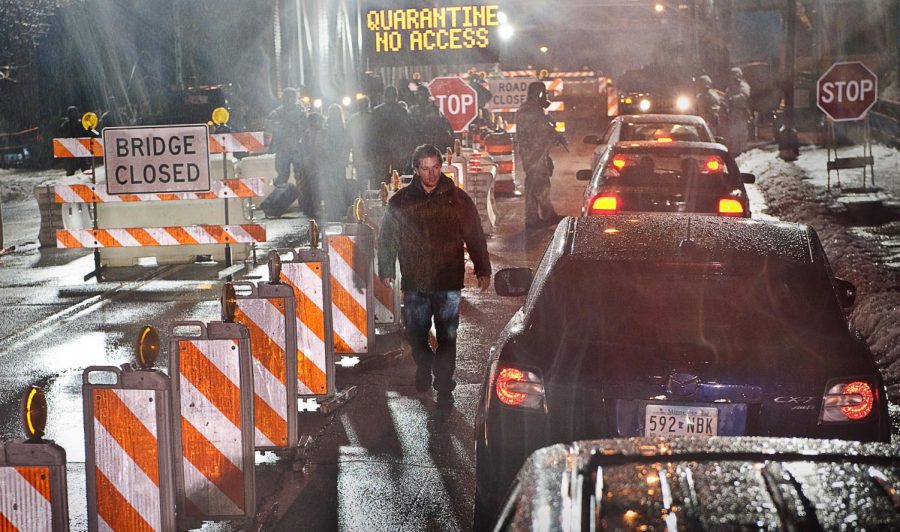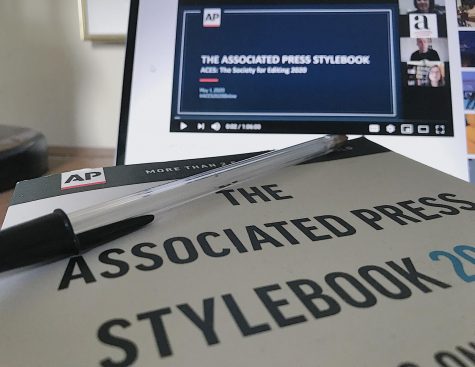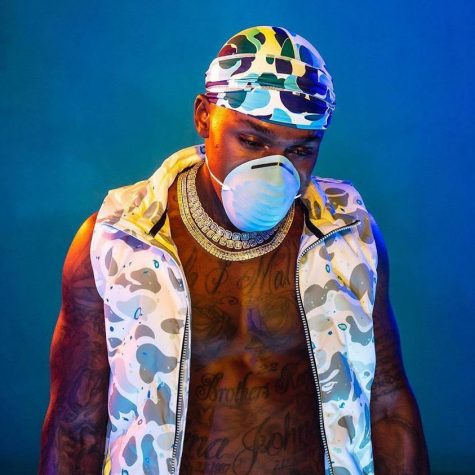Coronavirus in the Context of Pandemic Movies: A Deep-Dive Into “Outbreak” and “Contagion”
March 25, 2020
One of the many accomplishments of indefatigable Hollywood screenwriting is to have drawn up plans for just about every apocalypse imaginable in the course of their continual effort to find new ways of emptying out our wallets. They’ve managed to envision more doomsday scenarios than I can count: oversized tsunamis, meteorites, alien invasions and shark-infested tornadoes being just a few of the more sober money-grabbing inventions of the past 20 years. Some people get paid to explain why people pay to keep watching rehearsals of their own demise, but not me. I just watch them.
Lately, the most popularly circulated disaster flicks have been, naturally, plague or pandemic films. There are two popular options for these sorts of movies. The first involves the deployment of a small arsenal of clichés and ends up with a product similar to “Outbreak” (1995), the story of affable Dustin Hoffman’s efforts as a seasoned army doctor to bravely stop both a deadly strain of flu and a steely army general (Donald Sutherland) whose quarantine solution is to kill a small village’s worth of the infected with firebombs.
“Outbreak,” and other movies like it, aren’t actually about a plague. The virus and its implications exist only as a plot device, a dose of scientific nonsense thrown at the viewer as an excuse for two hours of the protagonists running around, glaring at each other, passing wisecracks, getting into twisting helicopter chases and racing against time. Director Wolfgang Petersen confines most of the action to just one locale, an isolated California town called Cedar Creek, ignoring most of the genuine possibilities of the plague.
It’s an action movie: a thriller that just happens to revolve around a high-powered virus, and which is really more interested in losing itself in the infectious good-naturedness of its Hoffman protagonist, his dialed-in heartache over his soon-to-be ex-wife (Rene Russo) and his no-brainer black-and-white response to the moral quandary posed by his po-faced military superiors (“Is it wrong if we murder patients instead of vaccinating them?”). We never worry much about the action of the film because, ultimately, we can’t buy the possibility that good ol’ Dusty will let us down.
The other popular option for the pandemic movie results in something like Steven Soderbergh’s “Contagion” (2011), a much dirtier and more meticulously researched film, that prefers a panoramic vision of pandemic over a star-studded extravaganza. Not that it doesn’t have its own bankable names: Gwyneth Paltrow plays the Minnesotan working mom who becomes patient zero of the movie’s supervirus after returning home from a business trip to Hong Kong. Her quietly worried husband is Matt Damon. Kate Winslet plays the agent the CDC sends to size up the outbreak while Marion Cotillard is sent by the WHO to try and pinpoint its origin.
Despite these players, Soderbergh is inveterately big-picture in his approach. His film is an obsessive one, that follows each thread of cause and effect to its logical conclusion in a hyperactive style that attempts to weave together every aspect of the biological crisis at once. We periodically check in on the different characters and their storylines: in one scene we see the government debates of the crisis, in the next the riotous panicking of the public, in the next a vlogger (Jude Law) stirring up rumors about corporate conspiracies and the healing power of forsythia and so on and so forth in a constant moving forward that has a climax but lacks an ending — because when does a pandemic definitively end?
Soderbergh has great fun with the colors allowed for by the trans-Pacific spread of his shooting locations. The scenes of wintry Minnesota produce an impossibly grey impression, an image of bleak cloud-covered snowscape that underscores the crushing, hopeless monotony of the quarantine imposed on helpless American citizens. All this is contrasted with tropical Hong Kong, the hot homeland of the virus, bathed in exotic and gaudy sunlight, shown often in flashbacks bright with camera flares.
But the film’s real prescience, and the way it best resonates with the current feelings surrounding the coronavirus, comes from the deep cinematic suspense that’s milked out of the contagion. The camera has the luxury of being able to go beyond the fear invoked by images of national guard humvees and burning supermarkets: simply by zooming in on infected persons as they wander through cities, sit on subways and crowded airplanes, eat and drink and shake hands, “Contagion” makes itself a horror movie. Soderbergh discovers how to find terror in the human touch.
If you want to worry more, watch “Contagion,” and if you want to worry less, watch “Outbreak,” but if you don’t want to worry at all, then don’t buy into the hype, and turn off the television.










If you want a picture to show with your comment, go get a gravatar.